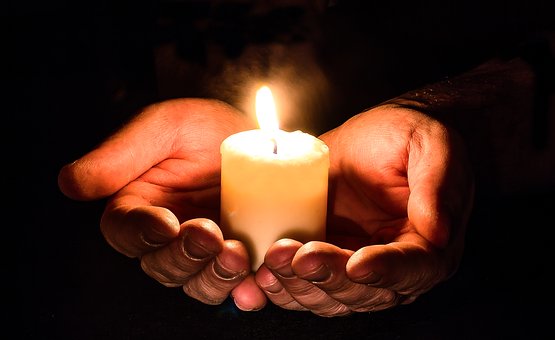By Rebecca Hall

The landscape of the spiritual life is a series of peaks, valleys, and plateaus (not to mention other things like desert, wilderness, water, and sometimes milk and honey…). With the exception of crucifixion moments, the most difficult time for most of us is when we have to wait for something, and the outcome is out of our control. That is an example of a valley moment. We are all in one collective valley moment as we wait for November 3rd.
We know waiting is part of the pattern, part of the spiritual landscape, because our scriptures offer us so many examples of waiting. We have the benefit of having read all these stories through their endings, but none of these characters knew their own ending.
- Hannah prayed in the temple waiting for a pregnancy
- Jonah sat in the belly of the big fish waiting for his “yes”
- Jacob worked and waited for 7 years (and then another 7) so he could marry Rachel
- The Israelites waited in Babylon longing for Jerusalem
- After her “yes” to the Angel Gabriel, Mary waited not knowing how Joseph and her community would respond to her pregnancy
- Mary and Martha waited 4 days for Jesus to come raise Lazarus from the dead
- Jesus waited in the Garden of Gethsemane before his arrest
- The disciples waited in the upper room after the crucifixion
- Early Christian communities waited for Jesus’ return
Occasionally, social science offers us a helpful picture or insight. William Bridges[1] in his books about leading through organizational change, describes a model for transitions. Picture in your mind a “U”. On the left there is an ending (this is where the change begins). We fall to the bottom of the “U” for an undetermined amount of time. Eventually, there is a new beginning and we crawl up the right side of the “U”. (Does this sound familiar? Crucifixion? Holy Saturday? Resurrection??) Bridges’ teaching on the transition model focuses on the bottom of the “U”, the waiting period. Technical change doesn’t happen here; this is where adaptive change happens, this is where transformation happens – if we let it.
The most difficult part of this pattern for most of us is the ambiguity and darkness of the bottom of the “U”. Our lack of control is completely unmasked. What we thought to be true is not necessarily so. We do not know how long we will be in this place. The way out has nothing to do with our will, our talent or skills, or our vision. This is the moment when we can utter nothing other than “thy will be done”.
We heard similar words from Jesus in the garden in Mark 14:32-36:
They went to a place called Gethsemane; and he said to his disciples, “Sit here while I pray.” He took with him Peter and James and John, and began to be distressed and agitated. And he said to them, “I am deeply grieved, even to death; remain here, and keep awake.” And going a little farther, he threw himself on the ground and prayed that, if it were possible, the hour might pass from him. He said, “Abba,[a] Father, for you all things are possible; remove this cup from me; yet, not what I want, but what you want.”
Even though Jesus’ actual crucifixion hasn’t happened yet, he knew his ministry had come to an end and his life might also end. He is thrown into the bottom of the “U”. There are a few things to notice in the story. Notice that he asks his friends to be with him. He doesn’t want to be alone during this time. Notice he turns to prayer as the only thing left to do. Notice that he continues to want a particular outcome (he is human, after all). And notice that in prayer he lifts his desire up to God and then lets it go.
Our “U”’s come in many forms, a health crisis, a job loss, a retirement (yes, we experience “U”’s even when we choose the change!), children growing up, losing a loved one, and the list goes on. “U”’s can be individual or collective (Bridges coaches organizations through change, for example). If we pay attention, we are always going through some sort of “U” change.
Our collective “U” right now is the election and the last few weeks of waiting. As a community we do have some control over the outcome through our activism and our votes. But at the end of the day, we each walk out of the polling station and into the garden to pray, holding fast to the outcome we desire (we are human, after all) and then holding it up to God. (Remember: Jesus was crucified because of the Romans, not because it was God’s vision. But God, in all God’s power, was able to transform even that horrific death into a blessing for the world)
On Election Day all the work will be done and there will be nothing left to do except pray and offer the outcome up to God to somehow turn it into a blessing for the world. We should not pray alone. We are not meant to be in the bottom of the “U” by ourselves. The Abbey will be praying every hour on the hour from 7 am – 7 pm. There will be three 30-minute Zoom services at the beginning, the middle, and the end. We hope you will join us. On the other hours we will briefly pause in prayer, knowing that The Abbey community is not asleep and that we are all on our knees together.
